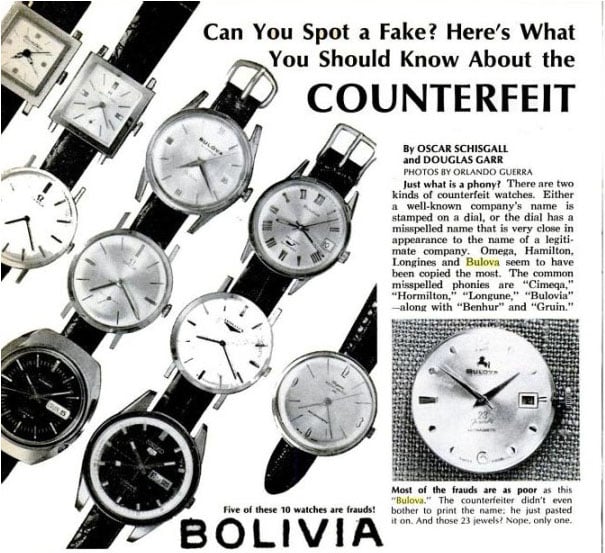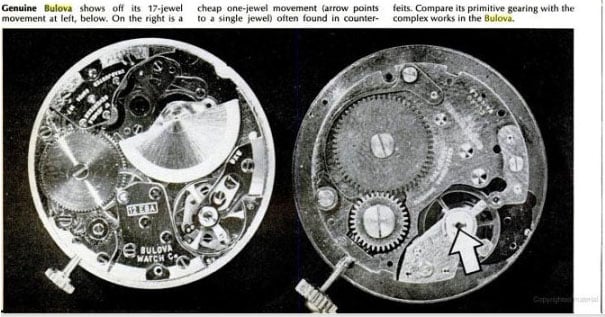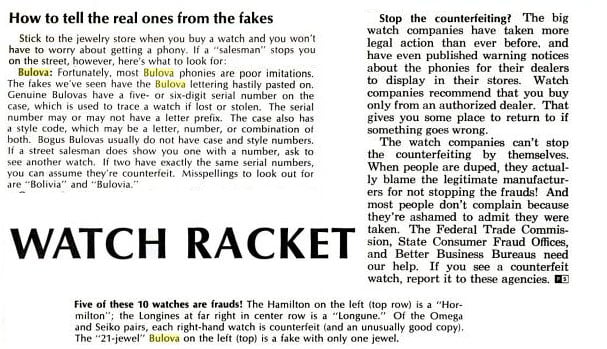This is from the December 1971 Popular Science magazine, which was as reputable a source of accurate information then as the National Enquirer is today! ...and Bulova was listed as being one of the four most-often faked watch brands.
Five of the ten watches at the top left side are fakes. See if you can spot them.
The answer is at the very bottom of the post.



I took some liberties with Photoshop to gut the bulk of the article and show just the Bulova content. The part about why there are serial numbers on Bulova watches is downright funny.
Lets say it's 1949. A bugler breaks into Joe Citizen's house in a large metropolitan East Coast city, and steals all his worldly possessions. Of course, the first thing Joe does is get out the documentation on his $24.75 Bulova Dean, and get that serial number to the police. They, in turn, put this serial number out on the wire- kinda like a Bulova ABP- sending to the 6,000 plus jewelry stores, 2,000 plus pawn and second hand shops, and various airports on the East Coast. The business owners and officials at these respective locations immediately post the serial numbers in prominent locations, so employees and public will aid in the search.
I believe the serial numbers were placed on Bulova primarily for 1. internal production accounting 2. unique identification for post-production distribution/sales/service. Bottom line period. I bet Bulova would just as soon the thief keep the watch and the owner buy a replacement. There's more info in those serial numbers then we currently understand. While unique identification is one aspect, there are, IMO, others which will aid in model ID and history.
I wish someone would post a watch with "Bolivia" or "Bulovia" on the dial. That would be fun to see.
They must have done a good job of controlling the counterfits, considering that we never see those examples, or any of the other telltale signs described in the article (i.e., missing serial numbers, "hastily pasted on" dial signature, cheap one jewel movements paired with a 23-jewel dial).
Does anyone have an example of those?
In reply to I wish someone would post a by NOVA
In reply to If I come across 1 I'll post by DarHin
are you kidding. Based on rarity, scarcity and survivorship, these would open up a new niche of replica, reproduction or fake Bulova collecting.
rarity - how many were produced
scarcity- regardless of production numbers, how many make it on the open market.
survivorship- how many don't get smashed by DarHin is a spectacular way (I doubt many of these were melted for gold content).
No example here, and I don't recall seeing one either. I'll keep and eye out.
...but it's Popular Science, and there's no references to anything documenting any of this.
There was more info in the article which suggests these watches were often cheap one-jewelers, and thrown away before too long. It was interesting to note that some of these fakes came w/ a two year service guarantee included. Most were also fake. But a watch company attorney reported one service contract was actually honored through a service department. They simply replaced the movement or complete watch vs servicing. The Federal Trade Commission and State Consumer Fraud Offices must keep some records of reported occurrences/violations?
